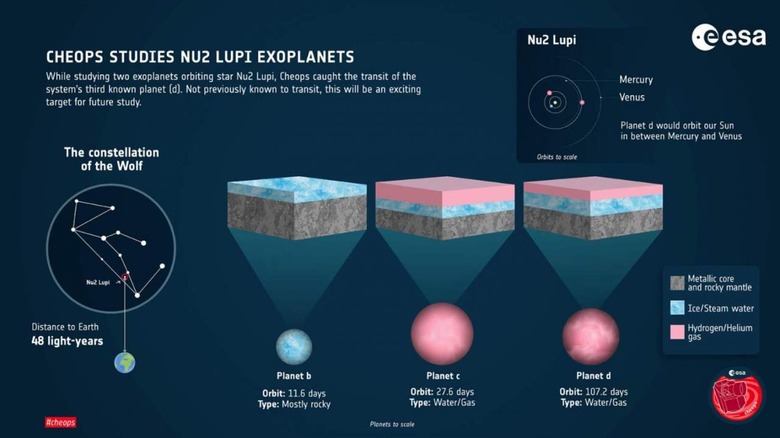Scientists Discover A Third Transiting Exoplanet Orbiting A Distant Star
The ESA has an exoplanet-hunting satellite in orbit called CHaracterising ExOPlanet Satellite or CHEOPS. Scientists were investigating a pair of previously known planets orbiting around a distant star when they unexpectedly saw a third exoplanet transit the star. The transit observed will reveal details about the strange planet researchers on the project described as being "without a known equivalent."The discovery is the first result for CHEOPS and the first time that an exoplanet has been seen with an orbital period longer than 100 days, transiting a star that is bright enough to be seen with the naked eye. The bright star is similar to the sun and is called Nu2 Lupi and is a bit more than 50 light-years from Earth, located in the constellation of Lupus. In 2019, HARPS at the European Southern Observatory in Chile discovered three exoplanets in the system dubbed B, C, and D. The planets had masses between those of Earth and Neptune with orbital periods of 11.6, 27.6, and 107.6 days respectively.
After the initial discovery, NASA trained TESS on the planet and found that the two interior planets, B and C, transit the star making it one of only three naked eye stars with more than one transiting planet. When planets transit the star, it provides astronomers with an opportunity to study their atmosphere, orbit, size, and composition.

Transiting planets block minuscule but detectable portions of the star's light when they pass in front of it. The challenge with discovering exoplanets with long orbits far away from the stars is that the possibility of detecting the planet during transit is very small, which is what makes the CHEOPS discovery such a surprise.
While planet D was known, catching it transiting the star was completely unexpected. During the transit, CHEOPS found that the planet was 2.5 times the Earth's radius and that its orbital period around the star was a little over 107 days. Data from terrestrial telescopes shows its mass could be about 8.8 times that of Earth. Scientists plan follow-up observations to learn more about the system.
